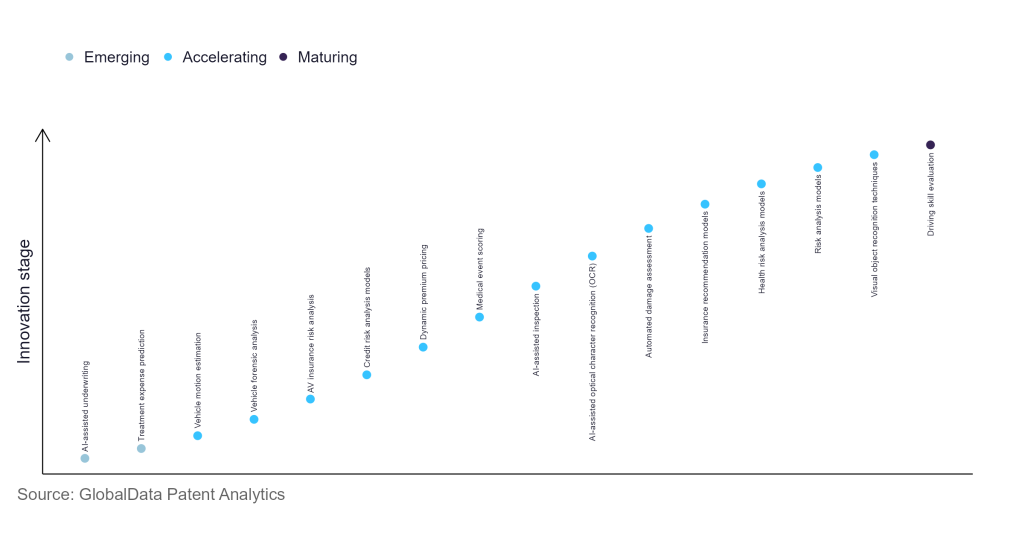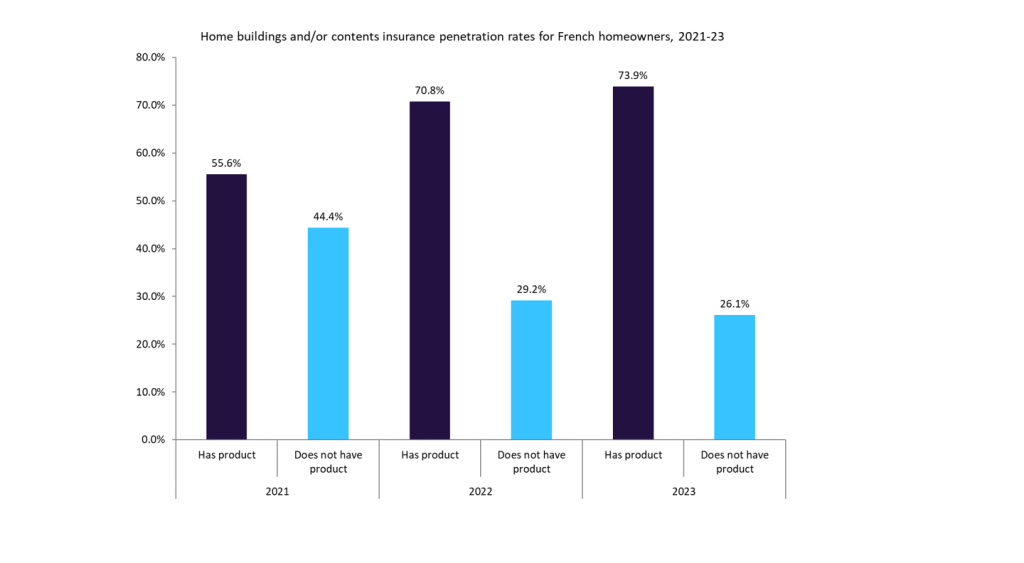The insurance industry continues to be a hotbed of innovation, with activity driven by growing demand for digitalization and personalization. With the growing importance of technologies such as telematics, machine learning, big data, deep learning, and data science, insurers are overcoming demographic challenges, low penetration rates, cybercrimes and fraudulent claims. In the last three years alone, there have been over 11,000 patents filed and granted in the insurance industry, according to GlobalData’s report on Artificial Intelligence in Insurance: Driving skill evaluation. Buy the report here.
However, not all innovations are equal, and nor do they follow a constant upward trend. Instead, their evolution takes the form of an S-shaped curve that reflects their typical lifecycle from early emergence to accelerating adoption, before finally stabilising and reaching maturity.
Identifying where a particular innovation is on this journey, especially those that are in the emerging and accelerating stages, is essential for understanding their current level of adoption and the likely future trajectory and impact they will have.
90 innovations will shape the insurance industry
According to GlobalData’s Technology Foresights, which plots the S-curve for the insurance industry using innovation intensity models built on over 65,000 patents, there are 90 innovation areas that will shape the future of the industry.
Within the emerging innovation stage, AI-assisted underwriting and treatment expense prediction are disruptive technologies that are in the early stages of application and should be tracked closely. Vehicle motion estimation, vehicle forensic analysis, and AV insurance risk analysis are some of the accelerating innovation areas, where adoption has been steadily increasing. Among maturing innovation areas is driving skill evaluation, which is now well established in the industry.
Innovation S-curve for artificial intelligence in the insurance industry

Driving skill evaluation is a key innovation area in artificial intelligence
Driving skill evaluation backed by AI enables monitoring of perceptual-motor skills to assess a driver's abilities from a risk perspective. Technical driving abilities such as efficient vehicle control, and break pattern are examples of perceptual motor skills, which are evaluated by AI. The use of AI reduces human errors in evaluation and increases objectivity while enabling real-time analysis, trend-tracking, automation, and increased driver safety.
GlobalData’s analysis also uncovers the companies at the forefront of each innovation area and assesses the potential reach and impact of their patenting activity across different applications and geographies. According to GlobalData, there are ten companies, spanning technology vendors, established insurance companies, and up-and-coming start-ups engaged in the development and application of driving skill evaluation.
Key players in driving skill evaluation – a disruptive innovation in the insurance industry
‘Application diversity’ measures the number of different applications identified for each relevant patent and broadly splits companies into either ‘niche’ or ‘diversified’ innovators.
‘Geographic reach’ refers to the number of different countries each relevant patent is registered in and reflects the breadth of geographic application intended, ranging from ‘global’ to ‘local’.
Patent volumes related to driving skill evaluation
| Company | Total patents (2010 - 2022) | Premium intelligence on the world's largest companies |
| J Fitness | 60 | Unlock Company Profile |
| Expanse Bioinformatics | 52 | Unlock Company Profile |
| State Farm Mutual Automobile Insurance | 42 | Unlock Company Profile |
| Allstate | 28 | Unlock Company Profile |
| Verisk Analytics | 14 | Unlock Company Profile |
| Huawei Investment & Holding | 10 | Unlock Company Profile |
| Panasonic | 8 | Unlock Company Profile |
| Toyota Motor | 7 | Unlock Company Profile |
| Sony Group | 5 | Unlock Company Profile |
| Aliphcom | 5 | Unlock Company Profile |
Source: GlobalData Patent Analytics
Verisk Analytics is one of the leading patent filers in analyzing driving behavior. The company uses a differential global positioning system (GPS) unit with high accuracy to pinpoint the location of a monitored vehicle along with other vehicles. The vehicle's location can also be compared to a predetermined map that includes the locations of objects that could be potential collision parties, such as telephone poles. When a collision is imminent, the system warns the driver and/or takes control of the vehicle to avoid the collision. For instance, the warning system alerts the driver when dangerous behavior, such as driving much faster or much slower than other vehicles on the road, is detected. Some other key patent filers in driver skill evaluation include Expanse Bioinformatics, J Fitness, State Farm Mutual Automobile Insurance, and The Allstate.
In terms of application diversity, Expanse Bioinformatics leads the pack, with J Fitness and Aliphcom in the second and third positions, respectively. By means of geographic reach, Huawei Investment & Holding holds the top position, followed by Panasonic and Sony Group.
To further understand the key themes and technologies disrupting the insurance industry, access GlobalData’s latest thematic research report on Insurance.
Premium Insights
From

The gold standard of business intelligence.
Blending expert knowledge with cutting-edge technology, GlobalData’s unrivalled proprietary data will enable you to decode what’s happening in your market. You can make better informed decisions and gain a future-proof advantage over your competitors.







